Dianmo Sheng
Context-Aware Weakly Supervised Image Manipulation Localization with SAM Refinement
Mar 26, 2025Abstract:Malicious image manipulation poses societal risks, increasing the importance of effective image manipulation detection methods. Recent approaches in image manipulation detection have largely been driven by fully supervised approaches, which require labor-intensive pixel-level annotations. Thus, it is essential to explore weakly supervised image manipulation localization methods that only require image-level binary labels for training. However, existing weakly supervised image manipulation methods overlook the importance of edge information for accurate localization, leading to suboptimal localization performance. To address this, we propose a Context-Aware Boundary Localization (CABL) module to aggregate boundary features and learn context-inconsistency for localizing manipulated areas. Furthermore, by leveraging Class Activation Mapping (CAM) and Segment Anything Model (SAM), we introduce the CAM-Guided SAM Refinement (CGSR) module to generate more accurate manipulation localization maps. By integrating two modules, we present a novel weakly supervised framework based on a dual-branch Transformer-CNN architecture. Our method achieves outstanding localization performance across multiple datasets.
Towards More Unified In-context Visual Understanding
Dec 05, 2023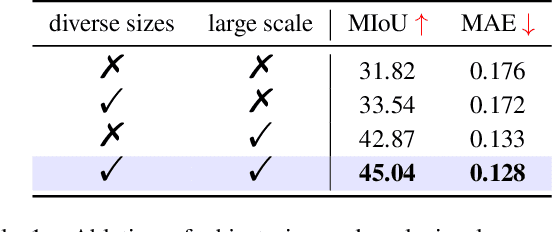
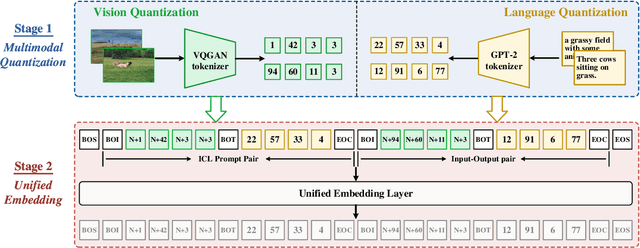
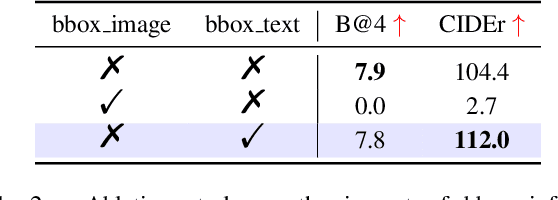
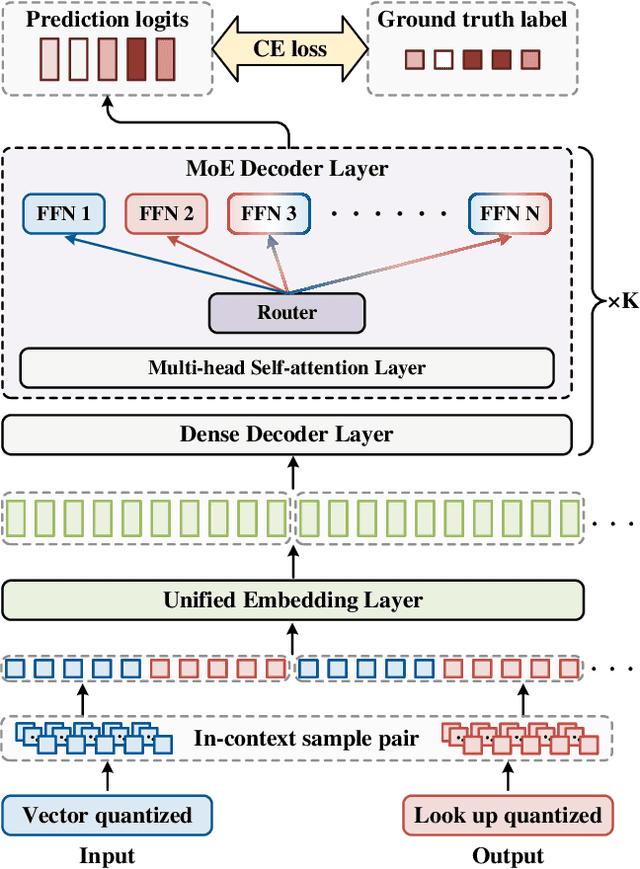
Abstract:The rapid advancement of large language models (LLMs) has accelerated the emergence of in-context learning (ICL) as a cutting-edge approach in the natural language processing domain. Recently, ICL has been employed in visual understanding tasks, such as semantic segmentation and image captioning, yielding promising results. However, existing visual ICL framework can not enable producing content across multiple modalities, which limits their potential usage scenarios. To address this issue, we present a new ICL framework for visual understanding with multi-modal output enabled. First, we quantize and embed both text and visual prompt into a unified representational space, structured as interleaved in-context sequences. Then a decoder-only sparse transformer architecture is employed to perform generative modeling on them, facilitating in-context learning. Thanks to this design, the model is capable of handling in-context vision understanding tasks with multimodal output in a unified pipeline. Experimental results demonstrate that our model achieves competitive performance compared with specialized models and previous ICL baselines. Overall, our research takes a further step toward unified multimodal in-context learning.
X-Paste: Revisit Copy-Paste at Scale with CLIP and StableDiffusion
Dec 07, 2022

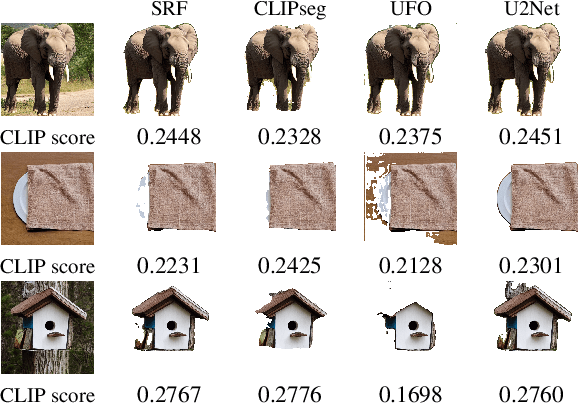

Abstract:Copy-Paste is a simple and effective data augmentation strategy for instance segmentation. By randomly pasting object instances onto new background images, it creates new training data for free and significantly boosts the segmentation performance, especially for rare object categories. Although diverse, high-quality object instances used in Copy-Paste result in more performance gain, previous works utilize object instances either from human-annotated instance segmentation datasets or rendered from 3D object models, and both approaches are too expensive to scale up to obtain good diversity. In this paper, we revisit Copy-Paste at scale with the power of newly emerged zero-shot recognition models (e.g., CLIP) and text2image models (e.g., StableDiffusion). We demonstrate for the first time that using a text2image model to generate images or zero-shot recognition model to filter noisily crawled images for different object categories is a feasible way to make Copy-Paste truly scalable. To make such success happen, we design a data acquisition and processing framework, dubbed "X-Paste", upon which a systematic study is conducted. On the LVIS dataset, X-Paste provides impressive improvements over the strong baseline CenterNet2 with Swin-L as the backbone. Specifically, it archives +2.6 box AP and +2.1 mask AP gains on all classes and even more significant gains with +6.8 box AP +6.5 mask AP on long-tail classes.
 Add to Chrome
Add to Chrome Add to Firefox
Add to Firefox Add to Edge
Add to Edge